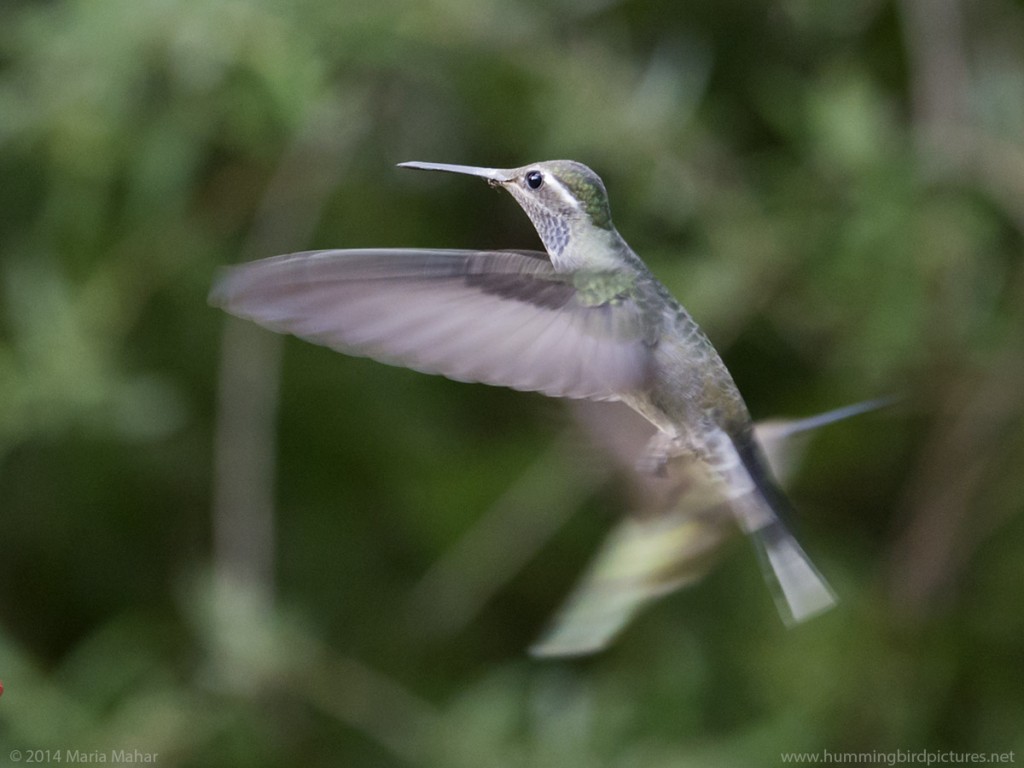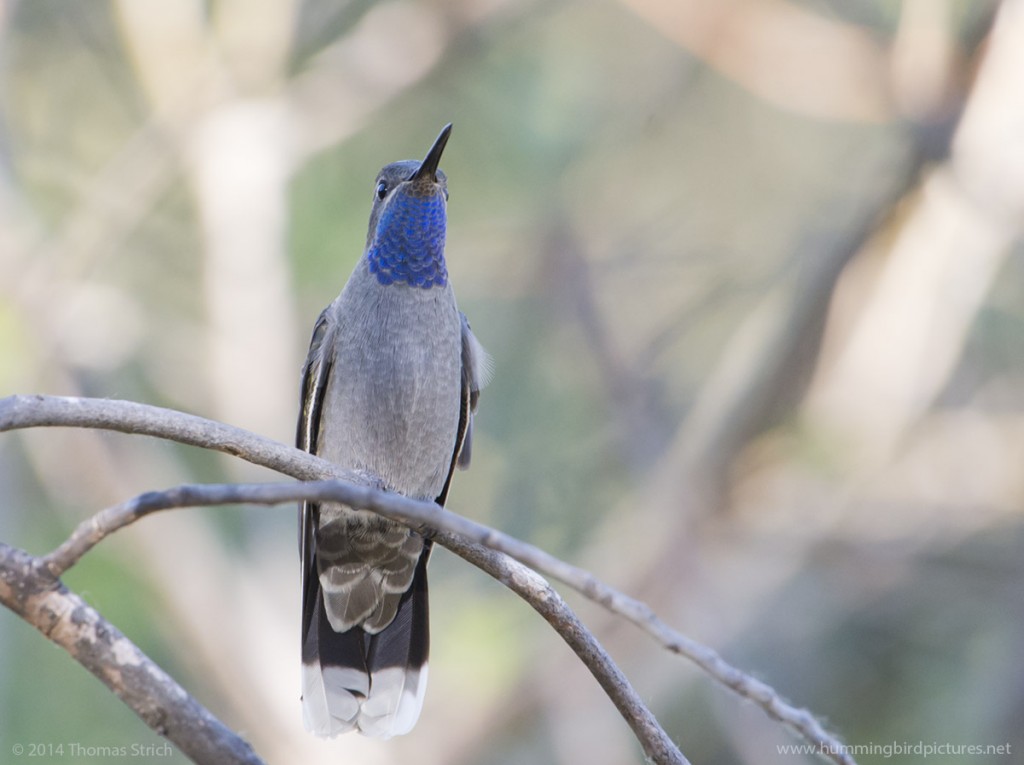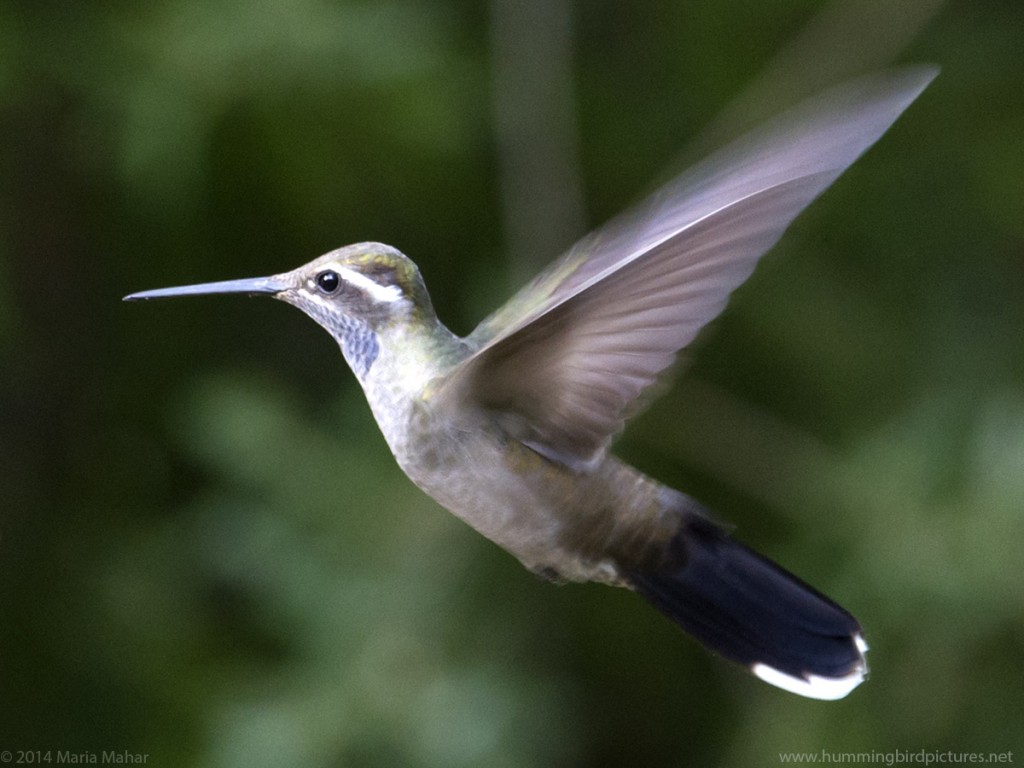The Blue-throated Hummingbird is a big, loud hummingbird. At least, the Blue-throated Hummingbird is loud at the Southwestern Research Station feeding area during summer.
It is the largest hummingbird that migrates into the United States. When this bird is around the feeding station, you know it.

This hummer is a little bigger than a Magnificent Hummingbird, between 4.75 and 5.25 inches long*. The Blue-throated Hummingbird’s head is smaller relative to its body and its bill shorter than the Magnificent’s.
Male Blue-throated Hummingbird

As with many hummingbird species, a male’s feathers can make him look like a different bird in different light. Here is a male Blue-throated Hummingbird with the light catching his bright blue gorget.
The Same Male Blue-throated Hummingbird

This is the same bird. His posture was slightly different and the sun did not catch his gorget in the same way.
Blue-throated Hummingbird calls and wing sounds
Click the arrow above to listen to the high pitched call and the low wing sound of a Blue-throated Hummingbird. (The wing sounds are at a very low pitch and easier to hear with headsets or ear buds.)
The male Blue-throateds are loud compared to other hummingbirds at the feeding stations (except for the wing trill of the male Broad-tailed). They seem more aggressive than the Magnificents when we have seen them together.
Big tail

The Blue-throateds often challenge each other, and other hummingbirds, flaring their tails and giving chase. Their tails seem very long and broad compared to the other hummingbirds.
(Note: the post originally included “wings” as long. After discussing hummingbird flight with Dr. Don Powers (hummingbird researcher), we have removed the reference to wings. Those wings seem huge but are basically in proportion with the bird’s larger size.)
See a Blue-throated Hummingbird
The Blue-throated Hummingbird likes wooded canyons. We have seen one or more of these hummingbirds in Miller Canyon and Cave Creek Canyon, and heard reports of them at Ramsey Canyon. Each of these canyons has a stream running through it, though the stream may not always flow. Miller and Ramsey Canyons are in the Huachuca Mountains near Sierra Vista, AZ. Cave Creek Canyon is in the Chiricachua Mountains.
We see them most often, and in greatest numbers, at the feeding stations in Cave Creek Canyon. We generally enter the canyon from Portal, AZ, on the eastern side of the Chirachua Mountains of southeastern Arizona.
Day time feeding stations:
Check for open hours. Bring cash for a donation. Check the Arizona birding listserv and other birding sites to find out if the birds are there.
Also, check the weather for Portal, AZ before you drive out. The monsoons can be powerful.
Photos were taken in 2014 at feeding stations in Cave Creek Canyon, near Portal, Arizona.
Thanks for coming by. Check out some of our blog or return home.
*Source: Hummingbirds of North America by Sheri Williamson